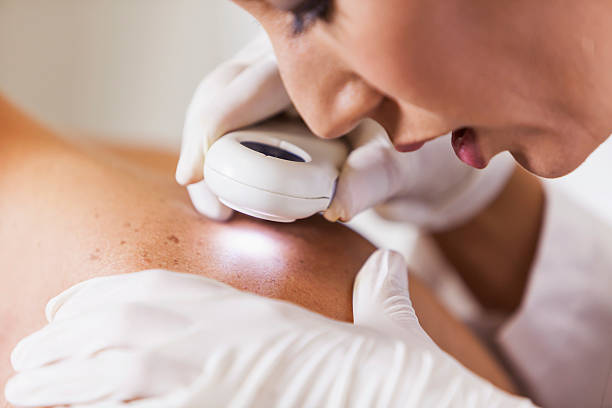With the abundance of sunshine here in Southern California it’s important to protect your skin from excessive UV exposure and recognize the warning signs of cancerous skin lesions. I’ll review the three primary types of skin cancer here and give you some quick and easy tips for picking out those concerning moles and freckles.
1. Basal Cell Carcinoma is the most common type of skin cancer and while it has the ability to spread locally on the skin surface it is the LEAST likely to metastasize or spread to other areas of the body. These lesions can be described as “smooth” or “pearly” and commonly have small visible blood vessels on their surface. Greater then 90% of these cancers occur on the face (Wolff, Johnson, Suurmond 282)
2. Squamous Cell Carcinoma is a cancerous lesion that arises from the outermost layer of the skin and has a greater ability to spread both locally and less commonly to other areas of the body. These lesions tend to have a more scaly, plaque-like appearance and can bleed easily. They most commonly occur on the sun exposed areas of the scalp, face, back of the hands, neck and forearms (Wolff, Johnson, Suurmond 276-281).
3. Melanoma is the most aggressive type of skin cancer. This form of skin cancer can be further divided into five classifications (which I will not discuss here). The most common type (greater then 70%) is Superficial Spreading Melanoma. (Wolff, Johnson, Suurmond 312) It is typically an elevated lesion with irregular borders and a variety of darker pigmented brown, black, and pink skin tones. These lesions most commonly occur on the upper back and while excessive sun exposure does increase the risk of development, this type of skin cancer also has a genetic predisposition. If left untreated this type of skin cancer has the greatest ability to spread into the deeper skin structures and to other areas of the body. (Wolff, Johnson, Suurmond 295-317)
When it comes to recognizing concerning characteristics of moles and freckles again just remember your ABC’s……
A – asymmetry
B – border irregularity
C – color variation
D – diameter greater then 5 mm
E – elevated lesions
Any freckles or moles with the above characteristics, or that are growing / changing should raise suspicion and be brought to the attention of your health care provider. It is important to check your skin regularly for growths or changes and have a head to toe skin exam by your health care provider annually. Protection from excessive sun exposure is vital to preventing skin cancer as well as keeping your skin youthful and healthy. Always wear a high SPF (greater then 50) sunscreen and apply liberally. I think Neutrogena makes a high quality product at a great price. If you will be in or around the water it is important to reapply regularly. The backs of your hands and neck are common places that are forgotten and tend to receive some of the highest levels of exposure so don’t neglect those areas. Have fun and stay active but don’t forget to protect your skin and it will stay healthy for the many years to come.
Christopher Handron, MPA, PA-C
Wolff, Klaus; Johnson, Richard; Suurmond, Dick. Color Atlas and Synopsis of Clinical Dermatology 5th ed. New York: McGraw-Hill 2005.
Note: I have no affiliation with the Neutrogena Corporation.

